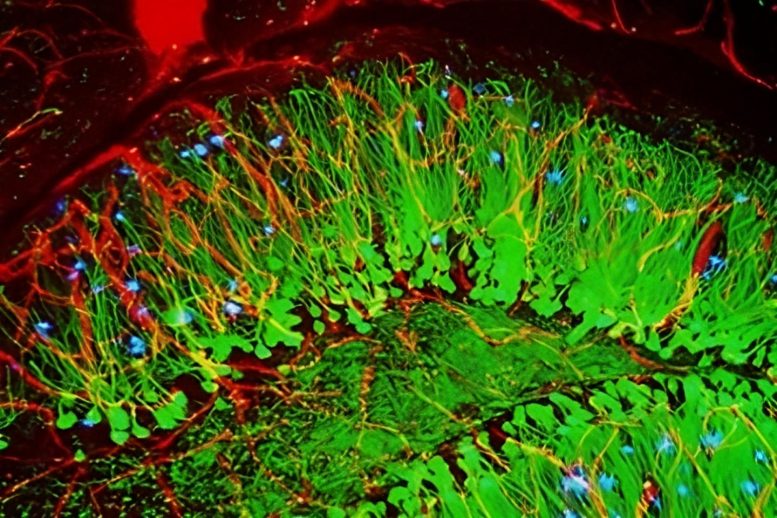
Researchers discovered that the removal of the APOE ε4 gene from neurons in mice resulted in a significant decrease in Alzheimer’s disease hallmarks, including cell death and tau tangle proliferation. This breakthrough suggests that the APOE ε4 gene plays a significant role in promoting Alzheimer’s development and opens up new potential therapeutic targets for treating the disease. Credit: NIA
Research on mouse neurons reveals a new therapeutic role of removing a genetic variant for Alzheimer’s disease treatment.
A National Institute on Aging-funded study reveals that eliminating a genetic risk factor in neurons reduces pathological hallmarks of Alzheimer’s disease in mice. The findings, published in Nature Aging, propose that the APOE ε4 gene’s activity within neurons aids in Alzheimer’s progression.
Certain genetic factors can heighten the likelihood of dementia, including Alzheimer’s. The apolipoprotein E (APOE) gene, which is known to affect Alzheimer’s risk, is one such gene. This APOE gene exists in multiple forms, referred to as alleles.
The APOE ε4 allele is known as the strongest genetic risk factor for Alzheimer’s, but how it increases a person’s risk for the disease is not well understood. Some studies suggest that the activity of APOE ε4 in astrocytes, a type of glial cell, plays a role in harming the brain.
In this study, a research team from the Gladstone Institutes investigated the gene’s activity in neurons, the cells that send signals throughout the nervous system. Using genetic engineering, the scientists removed the APOE ε4 gene from the neurons of mice that already carried a disease-causing variant in tau, a protein that often forms damaging tangles in the brains of people with Alzheimer’s.
Removing the APOE ε4 gene from neurons reversed much of the damage seen normally in the brains of mice with the pathological tau variant. For example, the removal of the neuronal APOE ε4 gene reduced cell death and the spread of tangles in the hippocampus, a brain region that is often damaged by Alzheimer’s. The disease also involves the loss of myelin, the insulation around nerves that helps them send signals to each other. Neuronal loss of APOE ε4 increased the presence of protective, myelinating cells to levels seen in the brains of healthy control mice.
Likewise, removing neuronal APOE ε4 reduced the appearance of “reactive” glial cells to levels seen in the brains of control mice. In a healthy brain, one role of glial cells is to support neurons. In Alzheimer’s, these cells can become unhealthy and reactive, which contributes to neurodegeneration.
The researchers observed a similar trend when they analyzed the genetic activity of disease-associated brain cell populations. They found that removing the APOE ε4 gene in neurons shifted the genetic activity of several brain cell types, from a damaging to a protective state.
This study provides new insights into potential therapeutic targets for APOE ε4-related Alzheimer’s and helps illustrate how APOE ε4 is involved in many of the characteristics of the disease. More research is needed to better understand APOE ε4’s role in Alzheimer’s.
Reference: “Neuronal APOE4 removal protects against tau-mediated gliosis, neurodegeneration and myelin deficits” by Nicole Koutsodendris, Jessica Blumenfeld, Ayushi Agrawal, Michela Traglia, Brian Grone, Misha Zilberter, Oscar Yip, Antara Rao, Maxine R. Nelson, Yanxia Hao, Reuben Thomas, Seo Yeon Yoon, Patrick Arriola and Yadong Huang, 20 February 2023, Nature Aging.
DOI: 10.1038/s43587-023-00368-3
The study was funded by the National Institute on Aging.









Be the first to comment on "New Hope in Alzheimer’s Battle – How Removing a Genetic Variant Could Be Key"